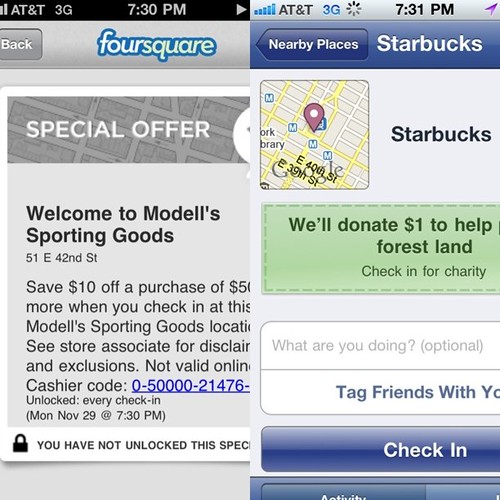Although in its infancy, location based marketing is poised for tremendous growth and opportunities.
Younger demographics are becoming harder and harder to reach because they are consuming content and interacting in new ways.
They aren’t watching TV, reading the newspaper, or listening to the radio despite your awesome setup with the best CB antenna. And they’re probably texting while driving!
There is currently a mass exodus of advertisers into social media because that’s where people want to hang out. It’s where their friends and family are, where they get recommendations from, and where they post positive or negative reviews.
After running a recent survey on over 1200 people, we discovered that almost 30% of people check their Facebook several times a day, and almost 60% at least once a day.
The location based services (LBS) channel is just an extension of this behavior, and it has a lot to do with your mobile distribution strategy.
To read more about tracking your location with a phone number, you can check this here.

Image courtesy of atmasphere
Potential Downside
The opportunities are endless. But first, the potential pitfalls.
When weighing the value of location-based specials, it will depend a lot on your brand and what type of customers you’re trying to reach.
The biggest potential downside of engaging new audiences through these channels is attracting the wrong audience (i.e. the “discount buyers”). These are the fickle shoppers who are brand neutral and only chase the lowest bargain. So unless you have the scale or ability to compete on low margins (which most really don’t), you should be hesitant to only focus on only enticing impulse purchases.
Besides driving new customers, you can also run specials that require a group to check-in, frequency based or obviously reward loyalty (i.e. Mayor specials, etc.).
Rewarding customer loyalty and inspiring people to come back again and again is a tremendous opportunity on location-based marketing sites. So not only are you investing the Lifetime Value of a Customer, but you’re also indirectly reaching their social graph.
This social graphc is tremendously important because these services will be able to recommend places based on your (or your friend’s) Check-In history.
There is also the added value of an impression, so people will take notice of where their friends frequent.
Who’s the Winner?
There are so many similar services. Gowalla, Foursquare, Yelp… even Facebook Places!
Despite Facebook’s huge, active user base, and strategic moves into extending its platform, Facebook Places leaves a lot to be desired.
A recent graph from Business Insider shows that Foursquare users are 5x more active than Facebook Places.
And in my experience, it’s more like 10x.
While I agree that the worth or quality of Facebook friends should be more, I don’t think Facebook has been as effective at really pushing their Places functionality.
So for our time and effort investing in LBS specials, I’m still heavily recommending Foursquare over Facebook. The additional leverage of pushing Foursquare Check-Ins to Twitter also makes it extremely easy to immediately follow up in real-time with customers.
Who’s Using Location Based Services?
Based on tests with a medium sized business heavily present in the South Western region, demographics are clearly still early adopters.
We’re seeing the bulk of users between ages 18-35 (around 50 – 60%), with the balance in the 35-55 age group. Gender is around 40% female and 60% male, and our biggest markets (out of the western region) are San Francisco, Los Angeles, and Las Vegas (probably due to urban/tech friendly/early adopters).
Again, this is focusing on one region but I think you can extrapolate these estimates for the typical location based service at this time.




